Gear Up Essential Lacrosse Equipment for BeginnersGear Up Essential Lacrosse Equipment for Beginners
Choosing the Right Lacrosse Stick
As the main tool for handling and passing the ball, a lacrosse stick is the most vital piece of equipment for any new player. When selecting your first stick, focus on finding the proper length based on your height and position, as well as the appropriate head type. Offset and curved heads are best for newer players still developing fundamentals.
Lacrosse Gloves for Protection and Control
Sturdy yet flexible lacrosse gloves safeguard hands from checks and passes while also improving overall stick control. Look for durable leather or synthetic palms along with stretchy Lycra backs. Proper fitting is also key – gloves shouldn’t be painfully tight but allow for full finger flexion and movement.
Getting the Proper Helmet Fit
A helmet is mandatory for protecting your head during play. Ensure a snug fit all around, with the front sitting just above the eyebrows. Foam or gel padding cushions impacts while metal facemasks and chinstraps keep everything securely in place. Prioritize comfort and visibility when selecting your lacrosse helmet.
Shoulder Pads for Collision Protection
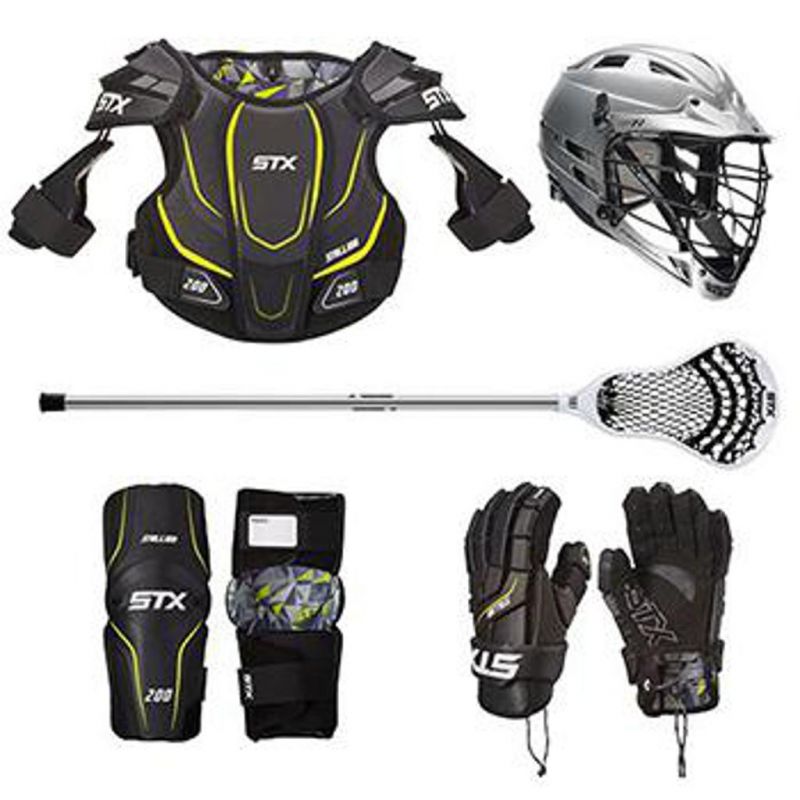
Checks and collisions are common in lacrosse, making shoulder pads a vital piece of protective gear. Seek out lightweight, breathable options that won’t restrict arm movement. Foam or plastic caps diffuse direct shoulder impact. For comfort, ensure your shoulder pads properly contour to your body.
Mouthguards Guard Teeth and Absorb Shock
No lacrosse player should take the field without a mouthguard. Custom-molded guards offer the best fit and protection. Cheaper alternatives like boil-and-bite guards work too but tend to be less comfortable. Mouthguards shield teeth from trauma and absorb some of the force transmitted to the jaw from hits.
Cleats for Traction and Maneuverability
The right cleats provide the traction you need for quick cuts, starts, and stops on the field. For beginners, opt for molded plastic or rubber cleats over metal screw-ins, as they’re more stable and less likely to cause injury. Proper lacrosse cleats position your heel below the toes for optimal acceleration.
The Importance of Groin Protection
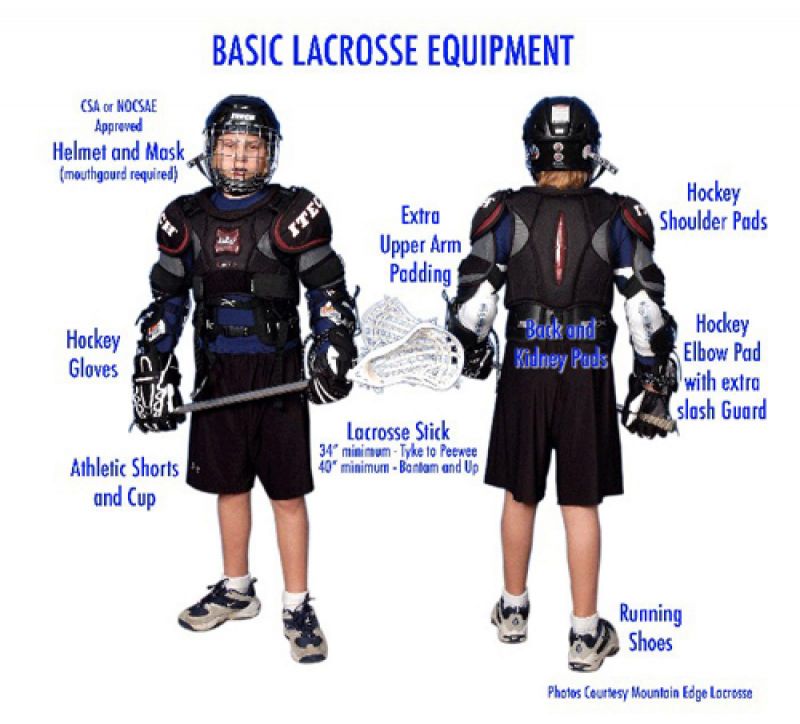
An athletic cup is vital to shield the groin from potential trauma, especially from errant checks and shots. Look for a design offering comprehensive protection without restricting mobility. Breathable cups with vents or moisture-wicking fabrics enhance comfort during play.
Selecting Lacrosse Gloves for Optimal Fit and Function
When shopping for your first pair of lacrosse gloves, prioritize finding the right balance of protection, dexterity and flexibility. Synthetic leather or durable Nash palm materials will withstand those forceful stick checks. Look for four-way stretch Lycra or mesh on the back for full range of motion. Take the time to properly size your gloves – a little snug is good, but you still want full finger and hand articulation. Trying on different brands can help find the best match for your hands. High quality lacrosse gloves will become an extension of your hands, enhancing your control and feel with the stick.
Finding the Right Lacrosse Helmet Fit
Material composition also plays a role in stick performance. Most modern sticks feature shafts made from lightweight yet durable materials like aluminum, titanium, or carbon fiber. These materials offer a good balance of strength and maneuverability, allowing beginners to develop proper technique without being hindered by excessive weight.
Key Features to Look for in a Beginner’s Lacrosse Stick:
- Appropriate length based on player height and position
- Offset or curved head for easier catching and ball control
- Lightweight, durable shaft material
- Comfortable grip tape or texture for secure handling
- Wide face for improved ball retention
Can the right stick really make a difference for a beginner? Absolutely. A well-chosen stick can help new players develop proper form, improve ball control, and build confidence on the field. Remember, as your skills progress, you may want to upgrade to a more specialized stick tailored to your playing style and position.
Lacrosse Gloves: Balancing Protection and Control
Lacrosse gloves are essential for safeguarding your hands from checks and impacts while maintaining optimal stick control. How do you choose the right pair of gloves that offer both protection and dexterity?

When selecting lacrosse gloves, prioritize finding the perfect balance between protection, flexibility, and comfort. Look for gloves with durable leather or synthetic palms that can withstand forceful stick checks. The back of the gloves should feature stretchy materials like Lycra or mesh to allow for a full range of motion.
Proper sizing is crucial for lacrosse gloves. They should fit snugly without being painfully tight, allowing for full finger flexion and movement. Many players prefer a slightly tighter fit around the fingers and a looser fit around the wrist for optimal control and comfort.
Essential Features of Quality Lacrosse Gloves:
- Durable palm material (leather or synthetic)
- Flexible backing for unrestricted movement
- Adequate padding in key impact areas
- Ventilation to reduce sweat buildup
- Secure wrist closure system
How can you ensure you’re getting the right fit? Try on multiple pairs and brands to find the one that best matches your hand shape and size. Remember, high-quality lacrosse gloves should feel like an extension of your hands, enhancing your control and feel with the stick rather than hindering it.
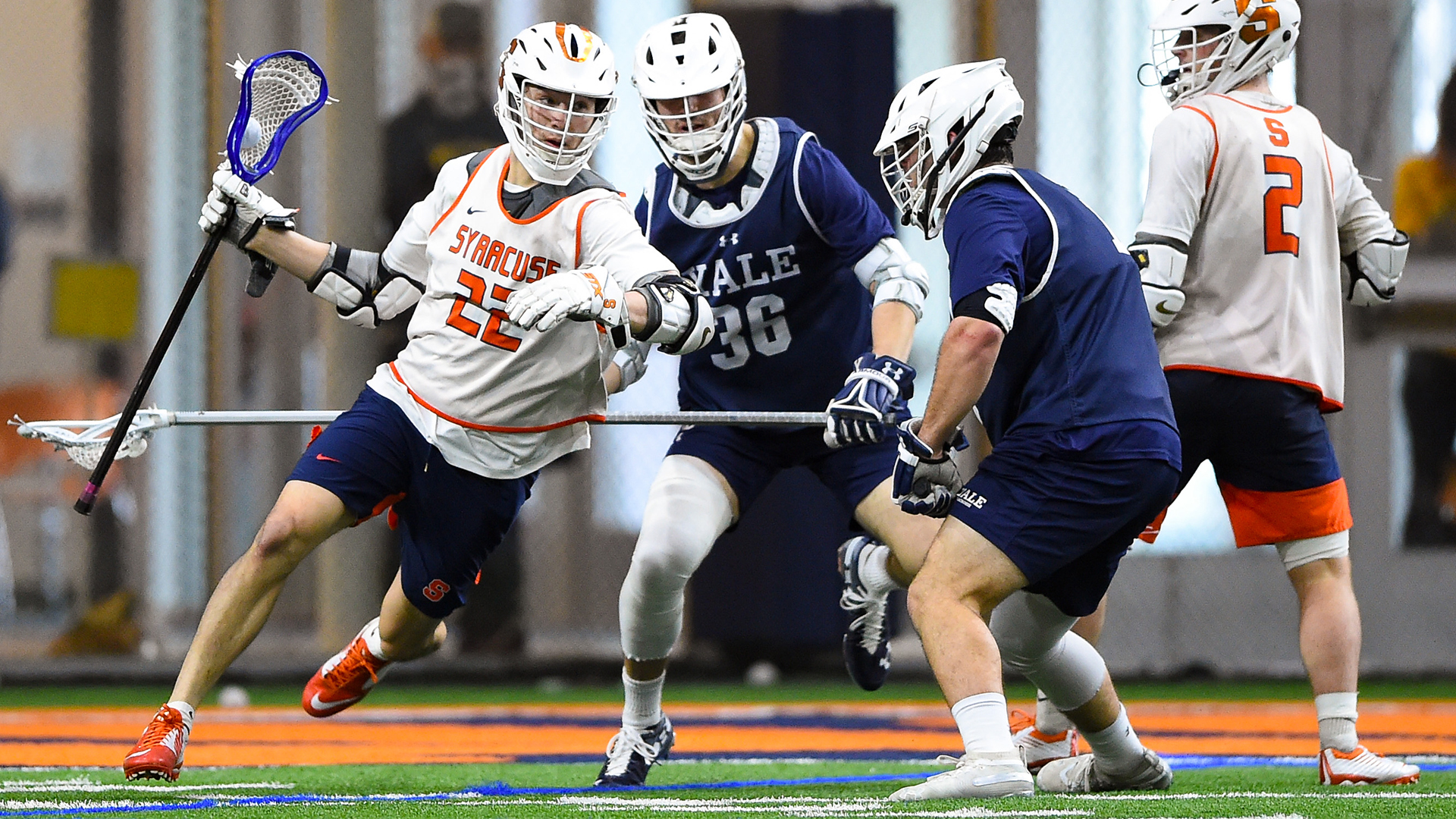
Helmet Selection: Prioritizing Safety and Comfort
A properly fitted lacrosse helmet is non-negotiable for player safety. How do you choose a helmet that offers maximum protection without sacrificing comfort and visibility?
When selecting a lacrosse helmet, focus on finding a snug fit that sits just above your eyebrows. The helmet should not rock or spin when you move your head. Look for models with adjustable padding systems that allow you to customize the fit to your head shape.
Modern lacrosse helmets feature various protective elements. High-quality foam or gel padding helps absorb impacts, while sturdy metal facemasks protect your face from errant sticks and balls. An adjustable chin strap ensures the helmet stays securely in place during play.
Key Considerations for Lacrosse Helmet Selection:
- Proper fit (snug all around with no rocking or spinning)
- High-quality impact-absorbing padding
- Durable metal facemask
- Adjustable chin strap
- Good visibility and ventilation
- NOCSAE certification for safety standards
Is color a factor to consider when choosing a helmet? While personal preference plays a role, many players opt for white or neutral colors to minimize glare on sunny days. Ultimately, safety and comfort should be your primary concerns when selecting a lacrosse helmet.
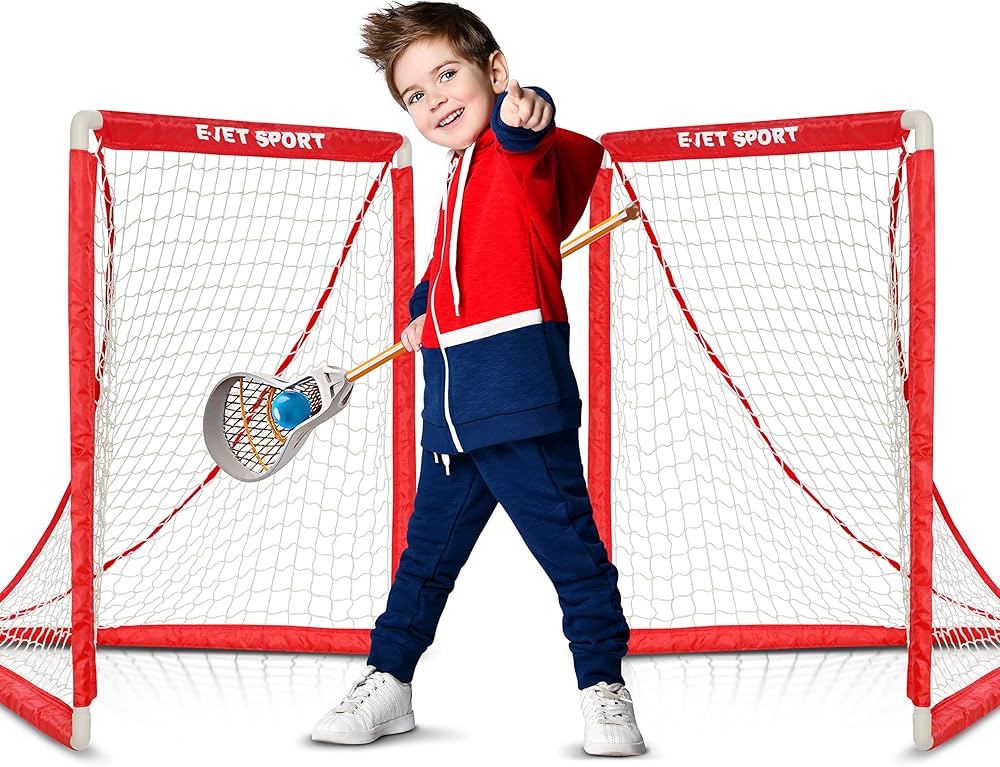
Shoulder Pads: Essential Protection for High-Impact Play
Lacrosse is a contact sport, and shoulder pads are crucial for protecting players from checks and collisions. How do you select shoulder pads that offer adequate protection without restricting mobility?
When choosing lacrosse shoulder pads, look for lightweight, low-profile designs that provide protection without hindering arm and shoulder movement. The pads should contour to your body shape for optimal comfort and effectiveness. Many modern shoulder pads use compressed EVA foam or similar materials that offer excellent impact absorption while remaining breathable.
Proper sizing is essential for shoulder pads. They should cover your shoulders, upper chest, and upper back without gaps or overlapping excessively with other protective gear. Some players prefer a more minimalist design for increased mobility, while others opt for more comprehensive coverage.
Features to Look for in Lacrosse Shoulder Pads:
- Lightweight, breathable materials
- Low-profile design for unrestricted movement
- Adequate coverage of shoulders, upper chest, and upper back
- Adjustable straps for a customized fit
- Plastic caps on shoulders for enhanced impact diffusion
How can shoulder pads impact your performance on the field? Well-fitted shoulder pads can boost your confidence, allowing you to play more aggressively without fear of injury. They also help distribute the force of impacts, reducing the risk of bruises and more serious injuries.

Mouthguards: Protecting Your Smile on the Field
Mouthguards are a critical piece of protective gear in lacrosse, safeguarding your teeth and absorbing shock to your jaw. How do you choose the right mouthguard for optimal protection and comfort?
While boil-and-bite mouthguards are a popular and affordable option, custom-molded guards offer superior protection and comfort. These are typically created by taking impressions of your teeth at a dentist’s office, resulting in a perfectly contoured fit. Look for mouthguards with thick shock-absorbing layers across the front and palate for maximum protection.
Proper breathing holes are crucial in a mouthguard to prevent gagging and ensure you can communicate effectively on the field. Some advanced mouthguards even incorporate special designs to improve airflow and reduce fatigue during play.
Key Features of High-Quality Lacrosse Mouthguards:
- Custom fit (for optimal protection and comfort)
- Thick shock-absorbing layers
- Proper breathing holes
- Durable, BPA-free materials
- Easy to clean and maintain
Can a mouthguard really make a difference in your game? Absolutely. A well-fitted mouthguard not only protects your teeth but can also help reduce the risk of concussions by absorbing some of the impact forces transmitted through your jaw. Plus, the peace of mind it provides can help you focus more on your game and less on potential injuries.

Cleats: Gaining Traction on the Lacrosse Field
Proper lacrosse cleats are essential for maintaining traction and agility on the field. How do you choose the right cleats to enhance your performance and reduce the risk of injury?
When selecting lacrosse cleats, consider the playing surface you’ll be using most often. For natural grass fields, longer cleats provide better traction, while shorter cleats are more suitable for artificial turf. Many players opt for molded plastic or rubber cleats, which offer good stability and are less likely to cause injury compared to metal screw-ins.
The fit of your cleats is crucial for comfort and performance. Look for a snug fit with about a thumb’s width of space between your longest toe and the end of the cleat. Many lacrosse-specific cleats feature a design that positions your heel slightly below your toes, which can improve acceleration and cutting ability.
Important Factors in Choosing Lacrosse Cleats:
- Appropriate cleat length for your primary playing surface
- Comfortable, snug fit with adequate toe room
- Durable upper material (synthetic leather or mesh)
- Good ankle support
- Lightweight design for improved speed and agility
How can the right cleats impact your game? Proper lacrosse cleats can significantly improve your traction, allowing for quicker starts, stops, and direction changes. This enhanced agility can give you a competitive edge on the field while also reducing the risk of slips and falls that could lead to injury.

Groin Protection: A Often Overlooked but Crucial Safety Measure
Groin protection is an essential but sometimes overlooked aspect of lacrosse safety gear. Why is it so important, and how do you choose the right protective cup for lacrosse?
An athletic cup is vital for shielding the groin area from potential trauma, particularly from errant checks and shots. When selecting a protective cup for lacrosse, look for a design that offers comprehensive coverage without restricting mobility. Many modern cups feature ergonomic designs that conform to the body’s contours for improved comfort and protection.
Breathability is another crucial factor to consider. Cups with ventilation or made from moisture-wicking materials can significantly enhance comfort during play. Some advanced designs even incorporate shock-absorbing materials to disperse impact forces more effectively.
Key Features to Look for in Lacrosse Groin Protection:
- Comprehensive coverage of the groin area
- Ergonomic design for comfort and mobility
- Breathable materials or ventilation features
- Secure and comfortable support system
- Durable construction to withstand impacts
Is groin protection really necessary for all players? While it may seem uncomfortable at first, wearing a protective cup can prevent serious injuries and give you the confidence to play without fear. Remember, it’s always better to be safe than sorry when it comes to protecting sensitive areas during high-impact sports like lacrosse.

As you gear up for your lacrosse journey, remember that each piece of equipment plays a crucial role in your safety and performance on the field. Take the time to select high-quality gear that fits properly and meets safety standards. With the right equipment, you’ll be well-prepared to enjoy the fast-paced, exciting world of lacrosse while minimizing the risk of injury.
Are you ready to hit the field with your new lacrosse gear? Remember, while having the right equipment is essential, nothing beats practice and dedication when it comes to improving your skills. So gear up, get out there, and enjoy the thrilling sport of lacrosse!
Choosing the Right Lacrosse Stick
As the main tool for handling and passing the ball, a lacrosse stick is the most vital piece of equipment for any new player. When selecting your first stick, focus on finding the proper length based on your height and position, as well as the appropriate head type. Offset and curved heads are best for newer players still developing fundamentals.
Lacrosse Gloves for Protection and Control
Sturdy yet flexible lacrosse gloves safeguard hands from checks and passes while also improving overall stick control. Look for durable leather or synthetic palms along with stretchy Lycra backs. Proper fitting is also key – gloves shouldn’t be painfully tight but allow for full finger flexion and movement.
Getting the Proper Helmet Fit
A helmet is mandatory for protecting your head during play. Ensure a snug fit all around, with the front sitting just above the eyebrows. Foam or gel padding cushions impacts while metal facemasks and chinstraps keep everything securely in place. Prioritize comfort and visibility when selecting your lacrosse helmet.
Shoulder Pads for Collision Protection

Checks and collisions are common in lacrosse, making shoulder pads a vital piece of protective gear. Seek out lightweight, breathable options that won’t restrict arm movement. Foam or plastic caps diffuse direct shoulder impact. For comfort, ensure your shoulder pads properly contour to your body.
Mouthguards Guard Teeth and Absorb Shock
No lacrosse player should take the field without a mouthguard. Custom-molded guards offer the best fit and protection. Cheaper alternatives like boil-and-bite guards work too but tend to be less comfortable. Mouthguards shield teeth from trauma and absorb some of the force transmitted to the jaw from hits.
Cleats for Traction and Maneuverability
The right cleats provide the traction you need for quick cuts, starts, and stops on the field. For beginners, opt for molded plastic or rubber cleats over metal screw-ins, as they’re more stable and less likely to cause injury. Proper lacrosse cleats position your heel below the toes for optimal acceleration.
The Importance of Groin Protection

An athletic cup is vital to shield the groin from potential trauma, especially from errant checks and shots. Look for a design offering comprehensive protection without restricting mobility. Breathable cups with vents or moisture-wicking fabrics enhance comfort during play.
Selecting Lacrosse Gloves for Optimal Fit and Function
When shopping for your first pair of lacrosse gloves, prioritize finding the right balance of protection, dexterity and flexibility. Synthetic leather or durable Nash palm materials will withstand those forceful stick checks. Look for four-way stretch Lycra or mesh on the back for full range of motion. Take the time to properly size your gloves – a little snug is good, but you still want full finger and hand articulation. Trying on different brands can help find the best match for your hands. High quality lacrosse gloves will become an extension of your hands, enhancing your control and feel with the stick.
Finding the Right Lacrosse Helmet Fit
When selecting your lacrosse helmet, fit and comfort should be your top priorities. The helmet should sit just above your eyebrows in front. Make sure it feels snug all around your head – spinning or rocking are signs it’s too loose. Foam or gel interior padding helps absorb impacts while providing a custom fit. High-quality metal facemasks and adjustable chin straps keep everything locked securely in place. Go with white or neutral colors to minimize glare. Test out different helmet brands and sizes to find your ideal match.
Choosing the Right Shoulder Pads
Since checks and collisions are commonplace in lacrosse, protective shoulder pads are a must-have. Look for lightweight, low-profile designs that won’t restrict your arm and shoulder mobility. Breathable materials like compressed EVA foam promote airflow. For comfort, ensure your shoulder pads properly contour to your frame – improper sizing can impede movement. Plastic caps on the shoulders diffuse direct impact from checks. While protection is key, maintaining a full range of motion remains vital for lacrosse players.
Custom Molding Your Lacrosse Mouthguard
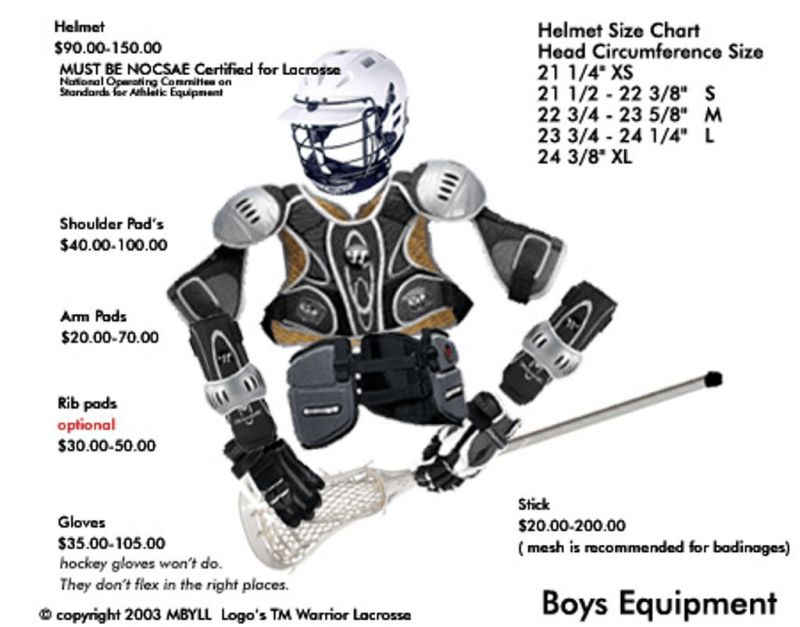
Mouthguards are non-negotiable in lacrosse to protect teeth and absorb shocks to the jaw. Boil-and-bite options get the job done, but custom-fitted guards offer superior protection and comfort. Most dentist offices can take impressions to create a mouthguard mold perfectly contoured to your teeth. Look for models with thick shock-absorbing layers across the front and palate. Proper breathing holes prevent gagging. Custom lacrosse mouthguards allow you to talk and breathe freely while providing max dental protection.
Choosing the Right Lacrosse Cleats
Proper lacrosse cleats provide essential traction for quick cuts, accelerations, and stops during gameplay. For beginners, molded plastic or rubber cleats are the safest bet over metal screw-ins, as they offer more stability. Opt for cleats with shorter, conical studs for optimal maneuverability on grass fields. They should position your heel slightly lower than the toes to maximize speed and acceleration. Try on different cleats to find the right fit – they shouldn’t pinch but your heel shouldn’t slip either. Take time to break them in before full-contact play to prevent blisters.
The Importance of Lacrosse Groin Protection
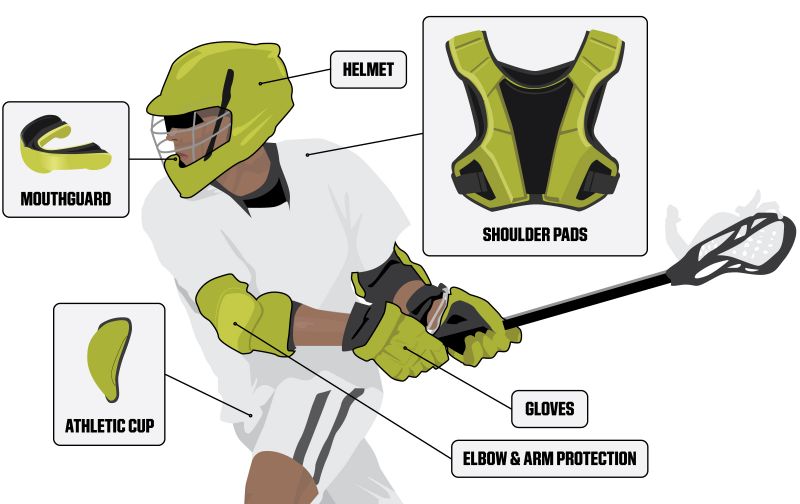
While an athletic cup may seem unnecessary, it provides vital protection for a lacrosse player’s vulnerable groin area. Stray checks, ricocheting ball shots, and even routine plays can all pose risks. Look for breathable cups with ventilation to enhance comfort, and ensure a design offering comprehensive coverage during movement. Snug compression shorts help keep the cup in place. Taking the time to find a cup that fits and feels comfortable is key – you want protective gear that you’ll actually wear consistently. Don’t risk going without groin protection and incurring a serious preventable injury.
The Role of Practice Balls
Having your own practice balls is vital for honing your lacrosse handling and passing skills at home. Look for softer, rubber versions compared to game balls – they’ll be easier on your hands as a beginner. Different colors also help with drills. Carry a few practice balls in your equipment bag at all times. Work on cradling, quick sticks, catching, scooping and more. Develop confidence and stick skills before stepping on the field. With consistent practice using appropriate balls, you’ll notice serious improvements in your fundamentals.
Choosing a Durable Mesh Equipment Bag
A mesh lacrosse bag with shoulder straps makes transporting your gear to and from the field much easier. Look for a bag made from durable, heavyweight nylon able to withstand regular use. Multiple compartments help organize equipment while ventilation pockets promote airflow and prevent bad odors. Padded, adjustable shoulder straps enhance comfort when loaded up. Choose a bag that’s spacious enough to hold all your equipment but not overly bulky. Mesh bags are designed to conveniently carry all a player’s lacrosse gear.
Using Athletic Tape on Your Lacrosse Stick
Having athletic tape on hand is useful for taping up lacrosse stick handles to improve grip. White, cotton cloth tape works best – it provides texture without getting overly sticky or gooey. Wrap tape snugly up the handle in a spiral pattern, leaving the bottom uncapped. Re-tape as needed before tape gets too dirty or worn. Proper taping ensures you can maintain control even when your hands get slick with sweat. It also absorbs vibration and protects against blisters. Tape allows for customized grip on your stick handle.
Supplemental Padding as Skills Progress
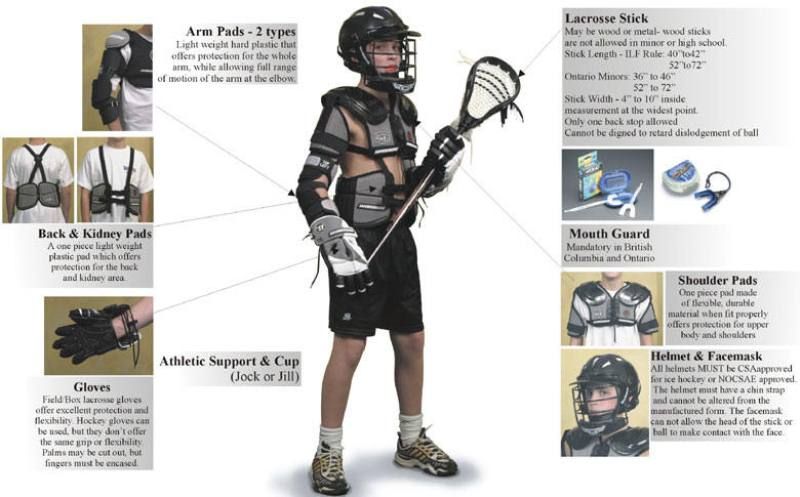
As an introductory lacrosse player, basic protective gear like helmets and gloves should suffice. But as skills and competition level increase, adding supplementary padding can be beneficial. Lightweight arm pads help shield limbs from checks and passes. Optional eyewear like rec-spec goggles offers an extra layer protecting eyes. Look for padding that provides protection without sacrificing mobility or comfort. Any gear that impedes natural movement can do more harm than good. Targeted supplemental padding boosts protection once fundamentals are ingrained.
Protective Eyewear Options
Once ready to add supplemental gear, protective eyewear is a wise consideration for any lacrosse player. Stray balls and checks pose risks to unprotected eyes. Many options exist -Rec-spec goggles offer an adjustable, wrapped design with ventilation to prevent fogging. More robust shield-style goggles provide increased coverage. Find eyewear that fits comfortably with your helmet without obstructing vision. Proper sports-specific eyewear effectively shields eyes from injury while allowing you to play uninhibited.
Having a Backup Stick on Hand
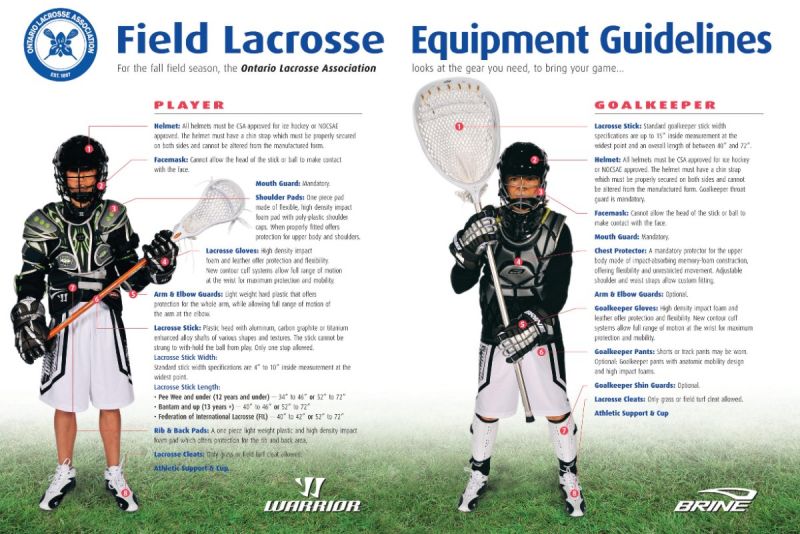
Once settled into lacrosse, it’s wise for players to have a backup stick readily available. Sticks can break at inopportune times from checks or misuse. A backup allows you to swap out damaged gear and quickly get back in the game. Look for a used stick in playable shape to save money. As skills progress, you may opt for a backups similar to your primary stick for consistency. Rotate to keep both sticks in good condition. With an extra stick bagged and ready, you can avoid missing crucial game time if equipment fails.
Goalie Gear Essentials
For lacrosse goalies, additional specialized protective equipment is required beyond standard gear. Padded chest protectors cushion the torso from close-range shots. Thick gloves help knock down the ball. Shin guards shield lower legs not covered by pads. Most importantly, a full helmet with chin strap and throat protector defends the head and neck. Goalie gear focuses on covering more surface area given the increased risks. Take time to properly fit and adjust all goalie equipment for maximum protection and ease of movement in the crease.